
Shopping Cart
Tudor Black Bay Bronze
€4.540
Tudor Black Bay Bronze
€4.540
Total€9.080
Continue to checkout
Maison De Greef is a true curator, handing down the values of creation and excellence since its foundation in 1848. Its unique visions, deeply rooted in the heritage and identity of six generations, have fostered the growth of this family business which is soon to reach its 200th anniversary.
Maison De Greef is evolving with the times, with the primary aim being to fulfil its clients’ wishes. Its conception of the decades to come embraces a creativity imbued with dreams and modernity, nourishing a relish for challenge that will constantly reinvent itself.
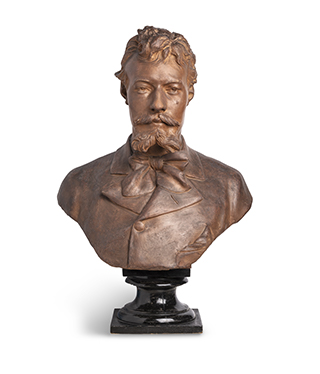
François-Prosper De Greef founds the company which bears his name in 1848 at number 28 rue au Beurre (see Box 1), near the Grand Place in Brussels. He soon lays the foundations for lasting success, becoming watchmaker to the Cooperative Society of the Personnel of the State Railways and, subsequently, official supplier of pocket watches to the Belgian Navy and the Postal, Telegraph and Telephone Company.
Rue au Beurre - the home of Maison De Greef
Linking the Grand Place in Brussels with the forecourt of the St Nicholas Church, rue au Beurre is one of the capital’s oldest arteries. Still full of craft businesses today, particularly silver- and goldsmiths and jewellery stores, its story goes back to the 11th or 12th century. Closely interwoven with the mediaeval fabric of the city, rue au Beurre features architecture characteristic of Brussels. In 1695, it is seriously damaged when it is bombarded by the troops of Louis XIV, King of France. Brussels recovers amazingly quickly, and measures are taken to enhance and enlarge the district's streets. A spirit of modernisation and embellishment sweeps the city and houses are rebuilt, juxtaposing Baroque, Classical and Neo-Gothic styles. This change also gives the city centre an eclectic mixture of architecture that is unique of its kind. Rue au Beurre becomes part of the Ilot Sacré district in 1968 and is pedestrianised in 1980. In that year, construction workers discover amazing architectural treasures in the Maison De Greef's cellar (see Box 5). Rue au Beurre, as part of the protected zone of the Grand Place, becomes part of a UNESCO World Heritage site in 2001.
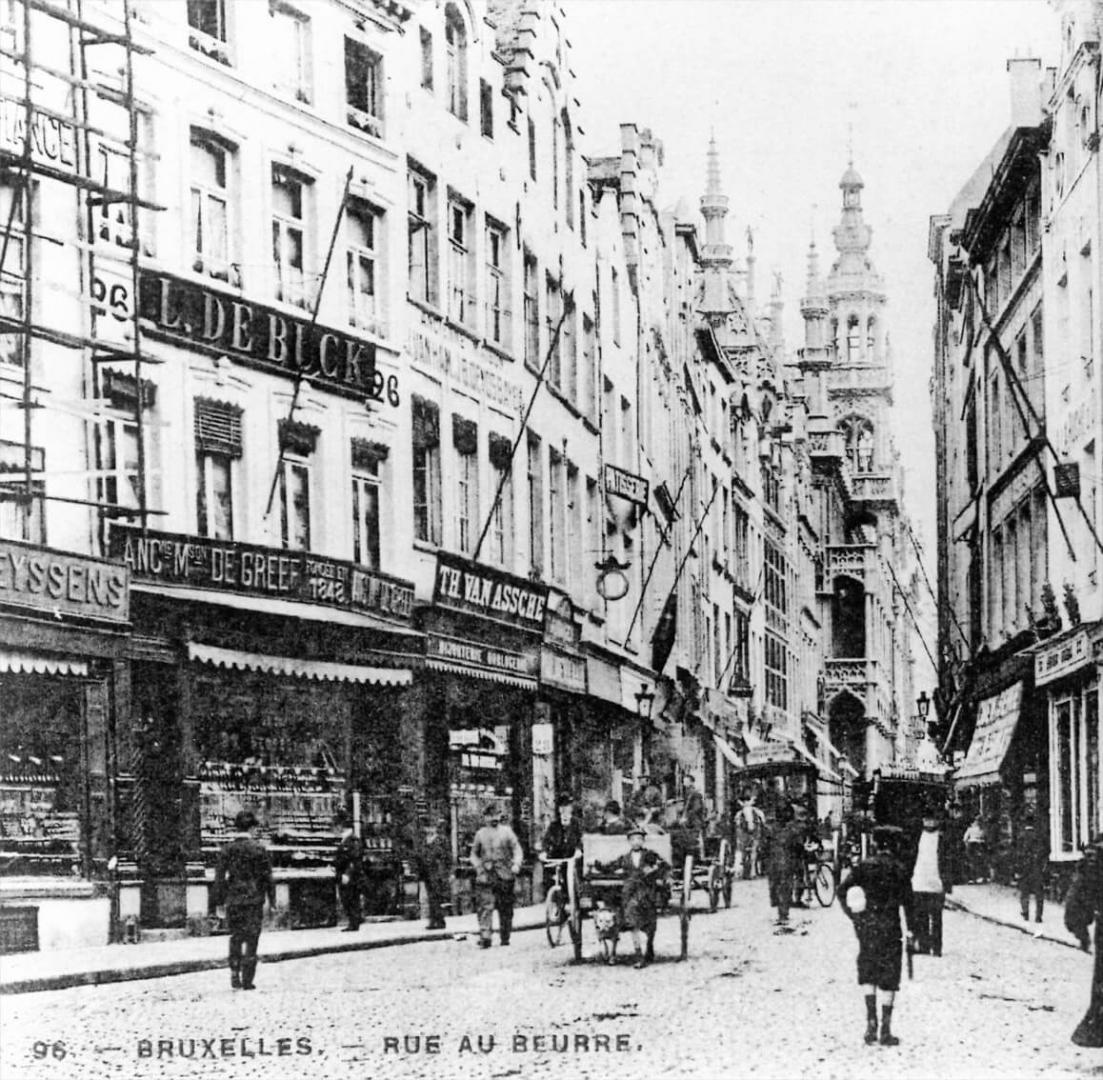
From 1880 onwards, Léon De Buck and his wife Agnès undertake to be present in the shop at all times to respond to clients and give them proper advice. The couple constantly develops the product range so as to be able to satisfy the lightest wishes of every client who crosses their threshold. The sale of pocket watches, fashionable jewellery, silverware and other articles of the gold- and silversmith’s art takes Maison De Greef right to the top of the ladder. It is one of the top addresses for customers seeking elegant and precious items in the Brussels of the Belle Époque.
In 1897, Léon and Agnès decide to expand their shop premises so as to offer their clients an even wider choice of elegant wares, and to establish the jewellery business at number 26 rue au Beurre, which has been vacated by a former pharmacy.
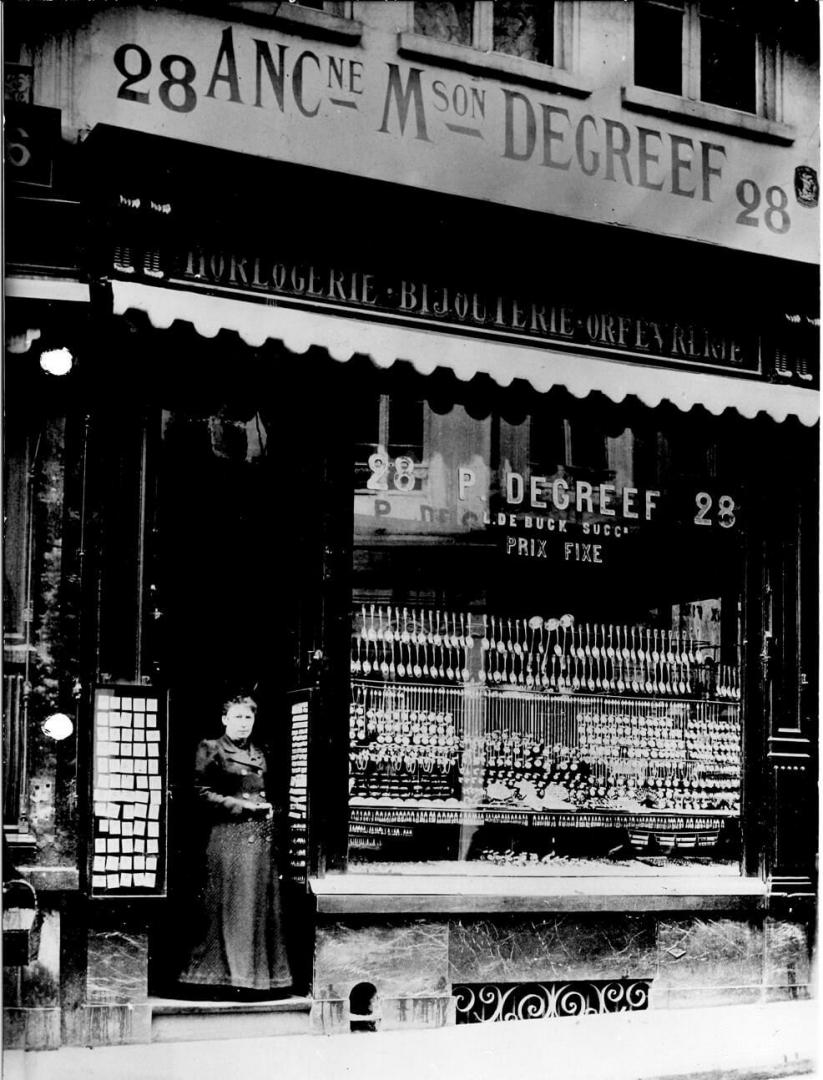
In 1903, at the age of 30, Augusta De Buck takes over the family jewellery business. She is the wife of Jules Wittmann, with whom she has two children: Jean and Marcel. As a widow and the sole proprietor of the family business in 1929, she has the good fortune to reap the rewards of 25 years of very hard work. This intelligent, dynamic and strategically gifted woman goes on to purchase No. 26 then, in 1935, No. 24 rue au Beurre. These acquisitions spur the business on to new heights.
At the beginning of the fifties, the City of Brussels grants permission for the two houses located at 24 and 26 rue au Beurre to be converted into one. Maison De Greef entrusted the project to avant-gardist Jacques Dupuis, who rises to world-wide fame some years later with his iconic design of the façade of Palais 5 at Expo 58. The single façade for Maison De Greef, smoothed, mortared and painted white, is undoubtedly controversial. However, since permission has been obtained, the works go forward all the same. Since then, two large windows framed in black have showcased Maison De Greef’s products to right and left of its front entrance.
The interior spaces are arranged fluidly and organically. The extensive public area of the shop unfolds beneath an impressive ceiling void embellished with a superb, large chandelier of Murano glass which is still there today.
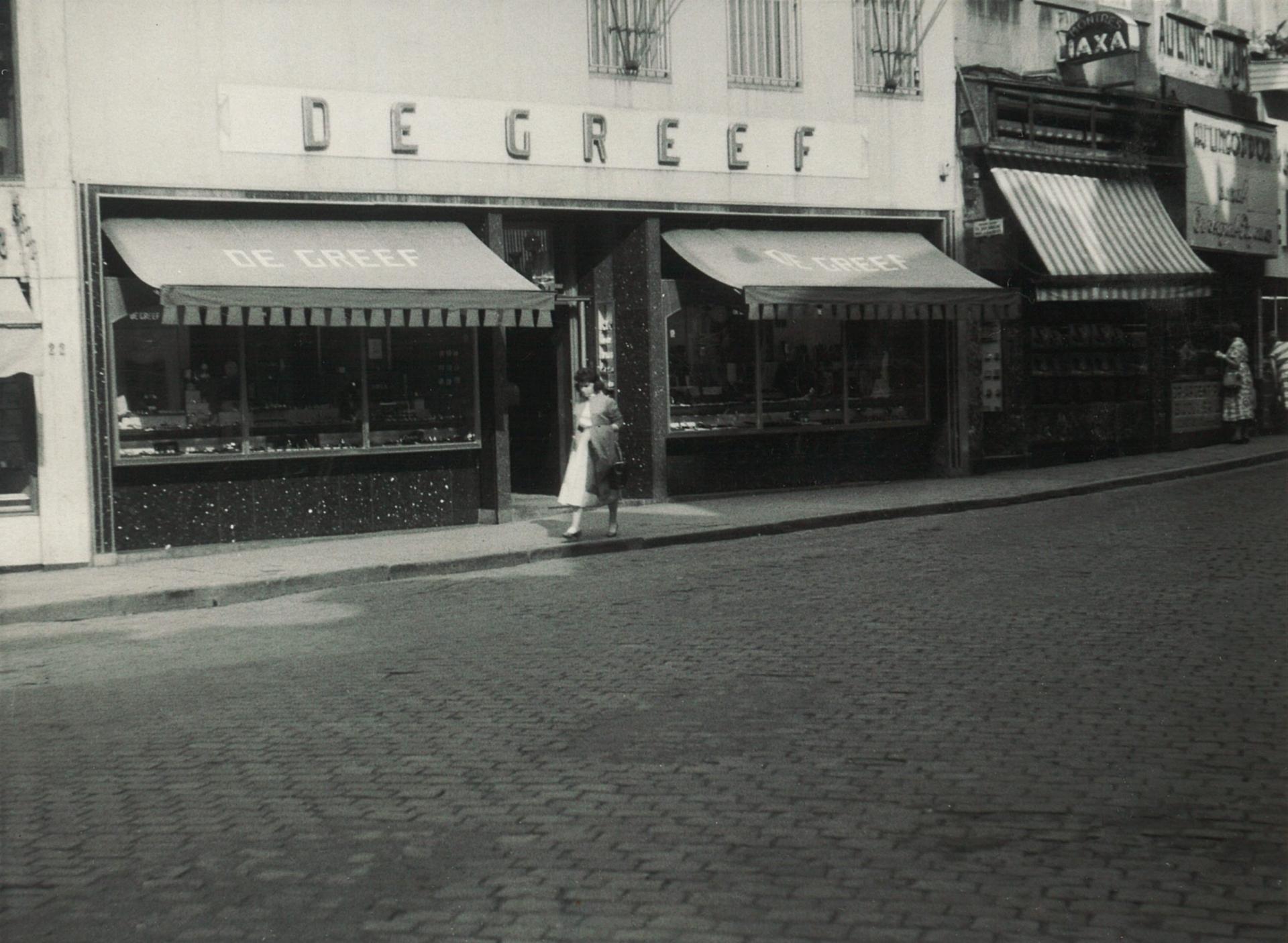
Augusta, supported by her elder son, Jean, transforms the façades of Nos. 24 and 26 (see Box 2). From then on, her sons Jean and Marcel progressively devote themselves increasingly to the family business and take it over upon their mother’s death in 1959.
At the beginning of the fifties, the City of Brussels grants permission for the two houses located at 24 and 26 rue au Beurre to be converted into one. Maison De Greef entrusted the project to avant-gardist Jacques Dupuis, who rises to world-wide fame some years later with his iconic design of the façade of Palais 5 at Expo 58. The single façade for Maison De Greef, smoothed, mortared and painted white, is undoubtedly controversial. However, since permission has been obtained, the works go forward all the same. Since then, two large windows framed in black have showcased Maison De Greef’s products to right and left of its front entrance.
The interior spaces are arranged fluidly and organically. The extensive public area of the shop unfolds beneath an impressive ceiling void embellished with a superb, large chandelier of Murano glass which is still there today.
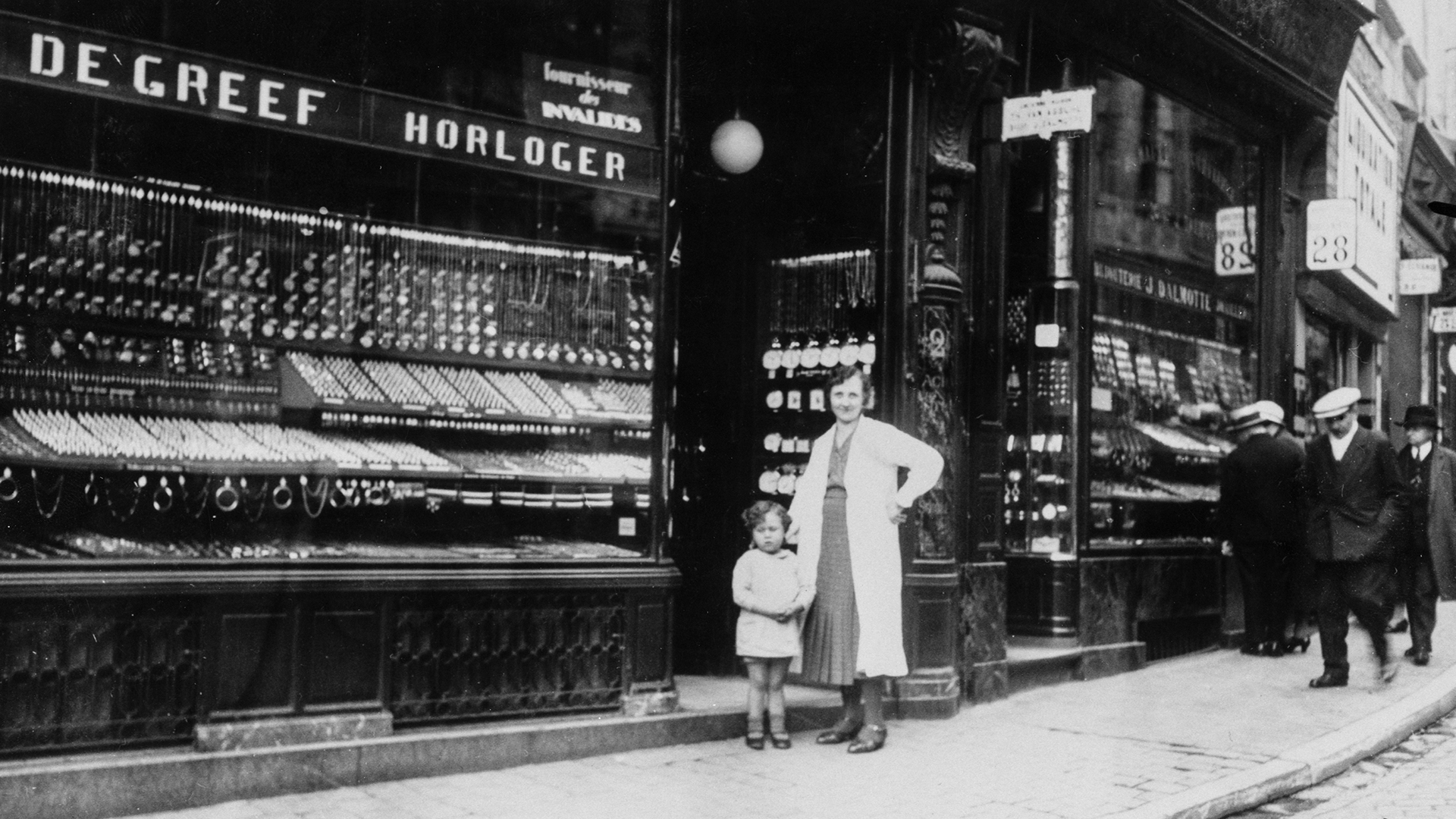
In 1958, Maison De Greef takes part in Expo 58 (see Box 3).
Marcel Wittmann and his wife Maria make sure that the family heritage is carried on. They live on the shop floor, which is consequently open seven days a week. Maria, a businesswoman of unparalleled ability, handles the finances, meticulously checks every piece of jewellery and timepiece, and also attends to clients’ requirements. The couple has two children. One of them, Paul, later enters the family business.
Maison De Greef at Expo 58
The Brussels World’s Fair attracts nearly 42 million visitors to the Heysel plateau. Maison De Greef is present, close to the façade of Palais 5 which symbolises this event on the international level. The façade was the work of architect Jacques Dupuis, the same man who had designed the new façade of Maison De Greef some years previously.
Alongside other famous gold- and silversmiths and jewellers, all together in Expo 58’s “Luxury and Decoration” pavilion, the Wittmann brothers present a variety of creations, one of which, a pendant, wins the Silver Medal in the Individual Presentations competition.
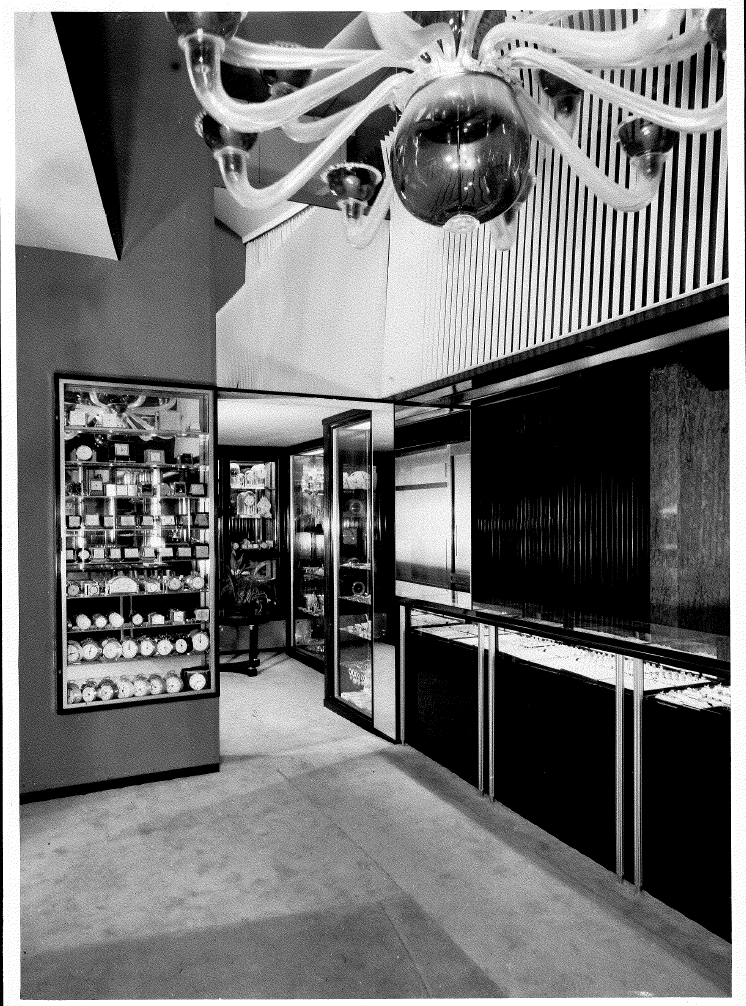
A collector of avant-garde art, notably possessing paintings by Magritte and Delvaux, Jean Wittmann himself nourishes creative ambitions in Maison De Greef’s jewellery sector.
While the business mainly revolves around the sale of watches and wedding rings, he drives the jewellery in a new direction, initiating collaborative ventures with invited artists and showcasing their limited series collections in the display windows at rue au Beurre (see Box 4).
Jean Cocteau invites himself to Maison De Greef
In 1971, a collection by Jean Cocteau dedicated to the signs of the Zodiac - “Jewels of Gold” - is presented to the public as a limited series. It is an immediate hit with Maison De Greef’s clients. A beautiful jewel being - to Jean Cocteau - “first and foremost a beautiful emotion”, it comes as no surprise that this gold brooch with engraving and openwork, evocative of Gemini, represents the two profiles of his lover Jean Marais.
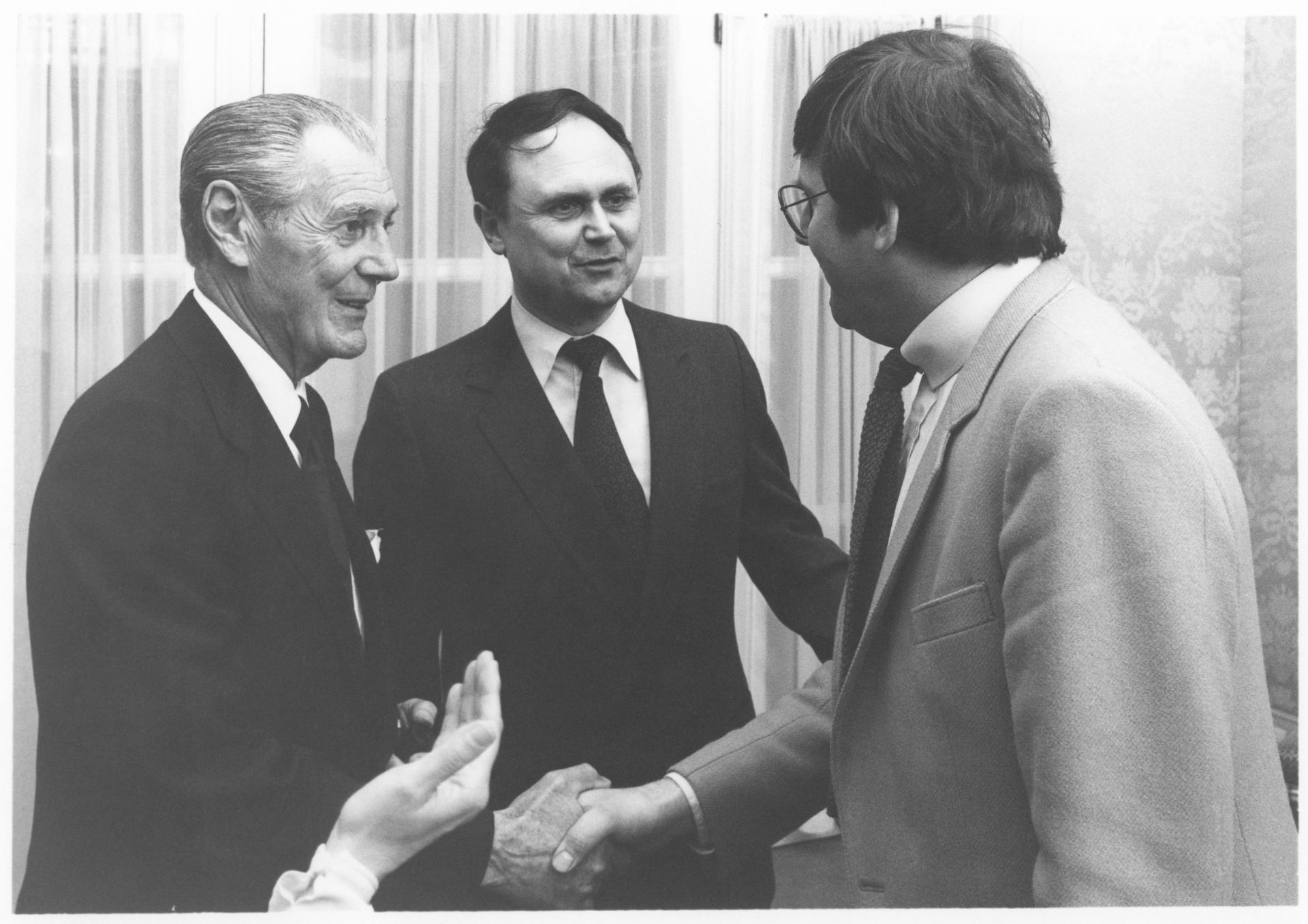
In the early 1980s, it is the turn of Maria’s and Marcel’s son Paul to take on the family business. A trained engineer, passionate about mechanical things, he has a keen interest in high-end watches, and in particular the latest advanced technology of Patek Philippe. This Swiss watch manufacturer’s philosophy is governed by the criteria of beauty, reliability and durability. A dialogue ensues and Maison De Greef very soon obtains exclusive rights to the brand in Belgium for several decades.
Archaeological treasure below Maison De Greef
During the construction of a sewage pipe in the summer of 1986, some pieces of early pottery were brought to light by workers digging in the underground cellar at No. 24 rue au Beurre. Excavations subsequently conducted by the Brussels Royal Society of Archaeology under the direction of Professor Pierre-Paul Bonenfant and his assistant Michel Fourny continued until the start of the following year.
For three months, Paul Wittmann was parted from his premises to allow the disposal of the excavated materials to be taken in hand. The sacks of earth were removed through the door of the jeweller’s shop. Samples taken from the debris were supplied to geologists, zoologists, botanists, entomologists and ceramics specialists for multi-disciplinary analyses. It could be deduced from these analyses that a skinner and a potter occupied the site in the 15th century. Historical and heraldic research rounded off the work. A relatively well-preserved tile was found from a large terracotta stove, whose sponsor could be identified by his emblem and his motto: “À jamais” (“Forever”). The man was Philippe de Clèves-Ravenstein (1456-1528), one of the chief advisers to Emperor Maximilian of Hapsburg.
In 1988, the Salle Ogivale of Brussels City Hall hosted an exhibition entitled “Rue au Beurre. Presence in the 15th century of a skinner and indications of a ceramicist around 1500”, dedicated to the excavations under Maison De Greef.
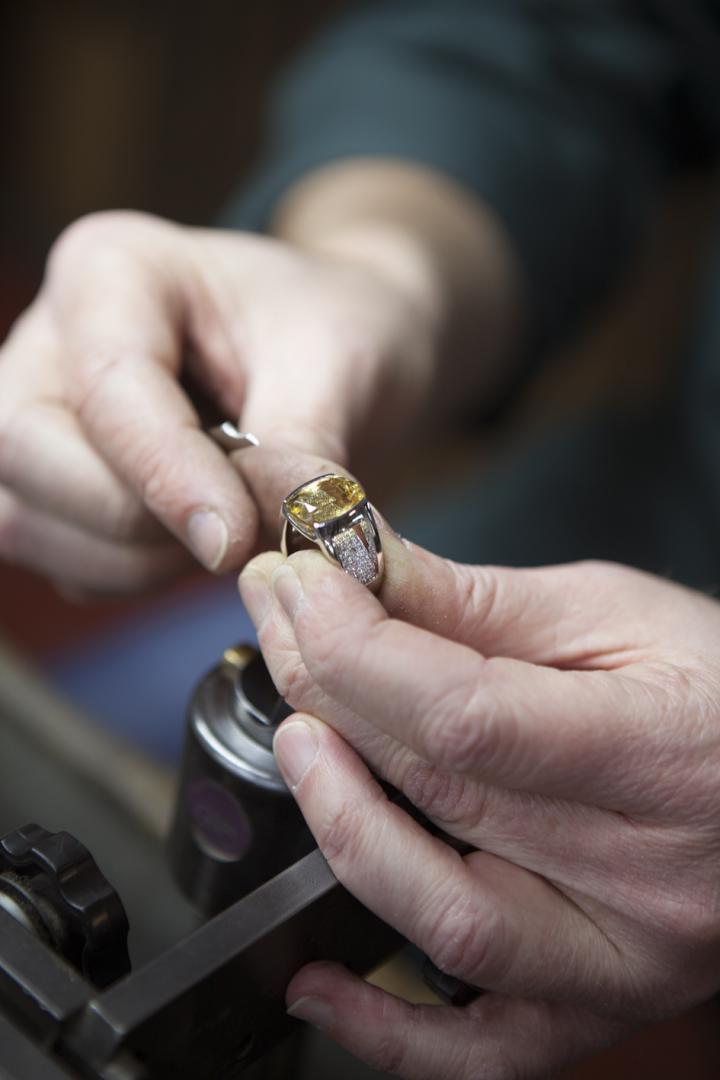
After studying jewellery at the Sir John Cass School in London, followed by gemmology studies at the City of London Polytechnic, Arnaud Wittmann, Paul’s son, joins the family company to direct the creation of a jewellery department. He soon presents his first collections for Maison De Greef.
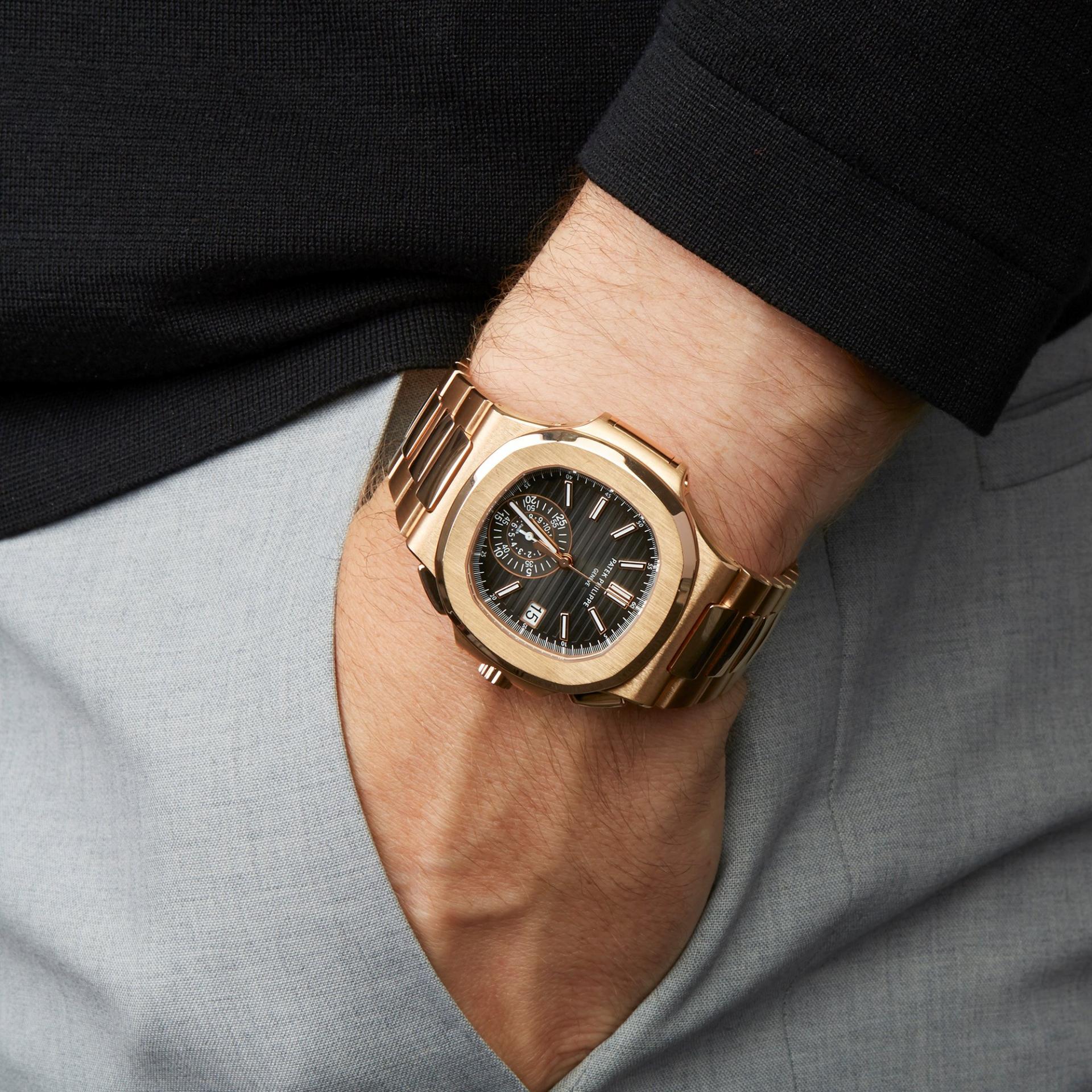
Jacques Wittman, Arnaud’s brother, also joins Maison De Greef as an expert watchmaker. The two brothers are soon to put the stamp of a quirky and unique style on the company.

The royal family includes Maison De Greef in the select and highly prized circle of the Association of the Belgian Royal Warrant Holders, acknowledging the company’s expertise and desire to maintain the highest level of excellence.

After the death of their father Paul, Jacques and Arnaud Wittmann take on the business on their own account and imbue it with their own style and vision. The stock of timepieces is completely revamped. Sharing a passion for excellence and a deep passion for their family business, the two brothers put in place a model quality charter. Watch-making partners approached by Maison De Greef comply so as to guarantee its clients the best possible quality.
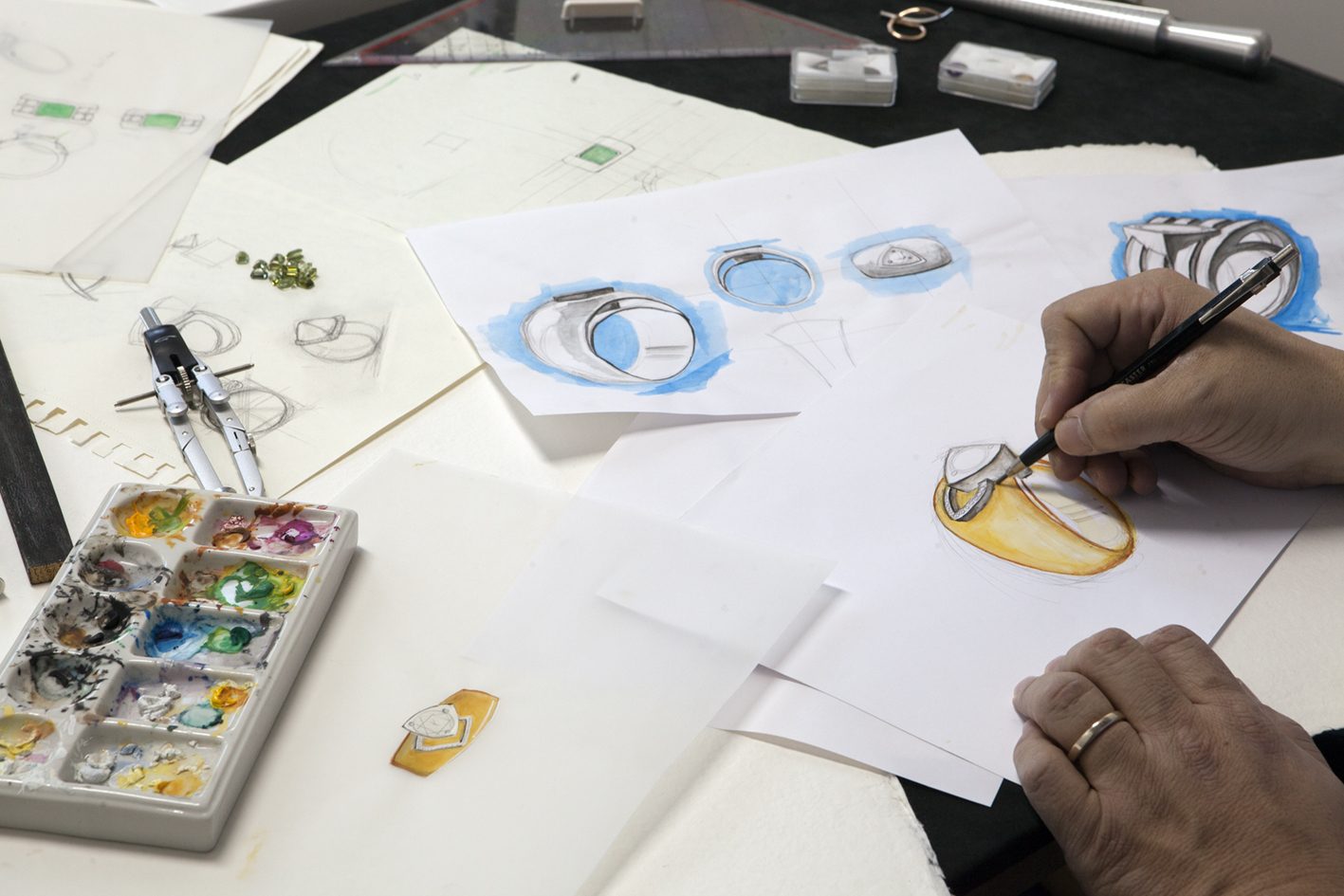
Arnaud Wittmann’s abstract and minimalist sketches evolve, precursors of an ever more unique artistic direction which is intimately associated with the spirit of Maison De Greef. Architectural influences, the celebration of movement and fluidity of curves are increasingly clearly reflected in his designs.
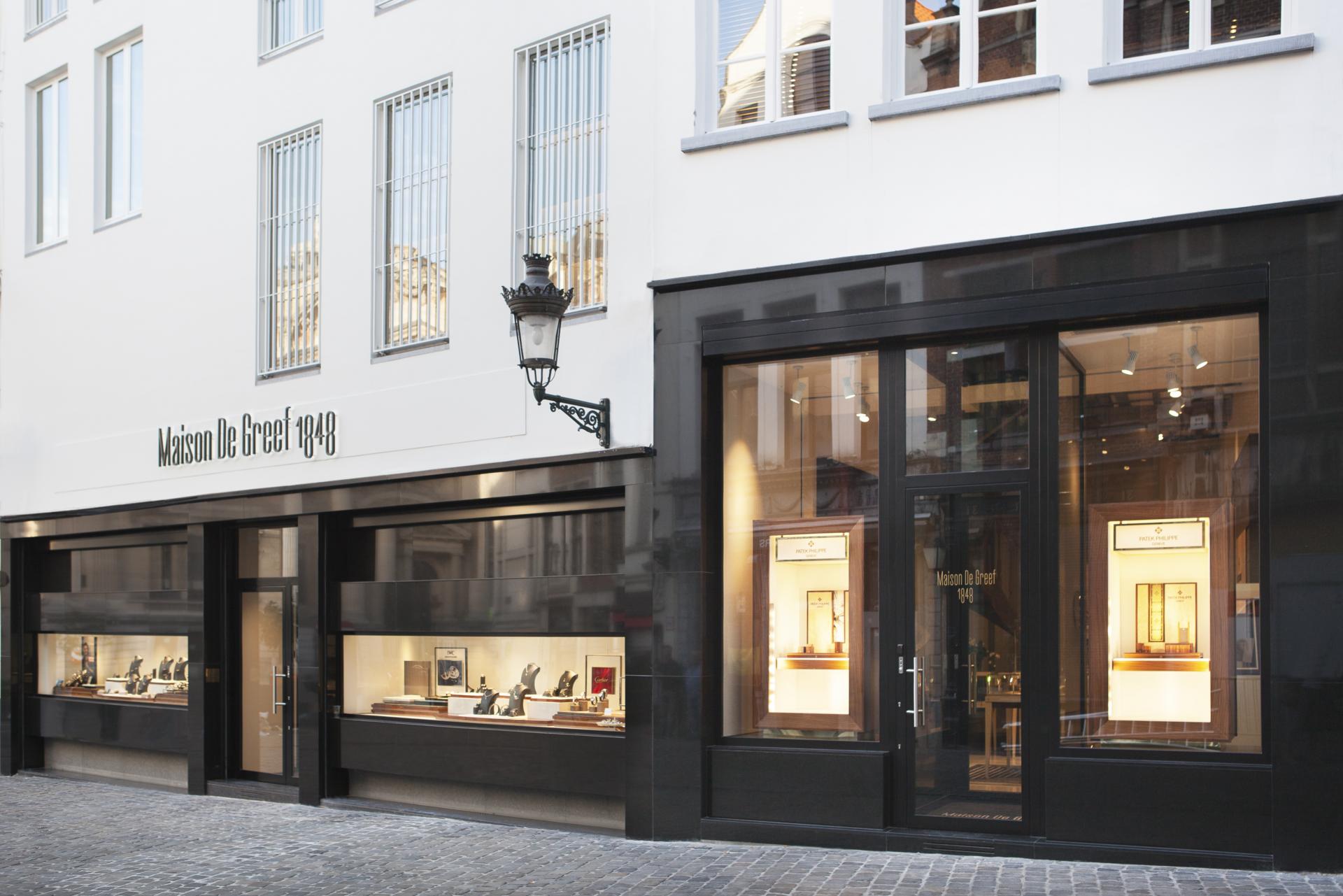
In 2005, the complex of façades, rooftops and cellars of Nos. 24 and 26 rue au Beurre together with the interior design masterminded by Jacques Dupuis is added to the Brussels-Capital Region's Inventory of Architectural Heritage.
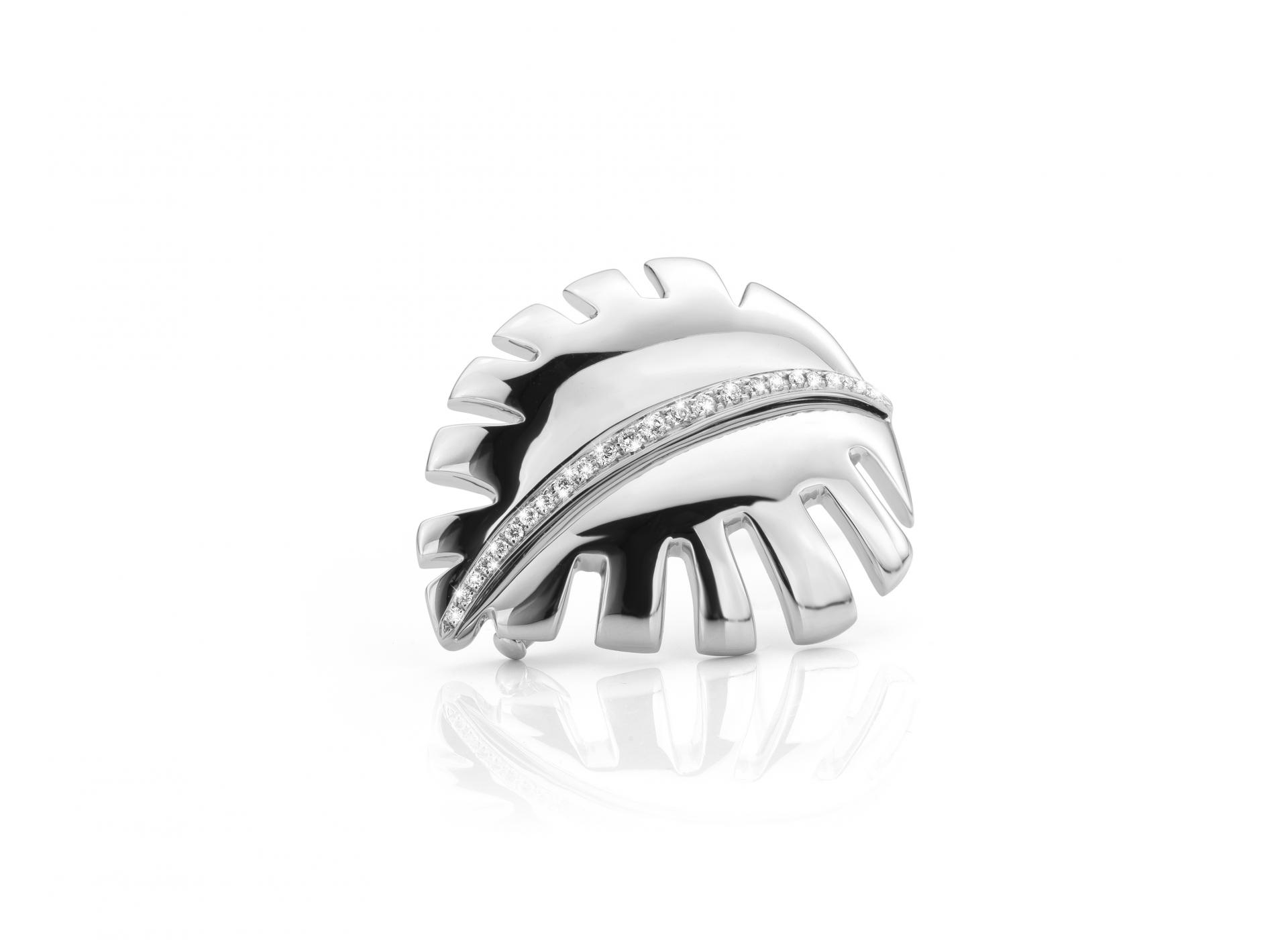
Arnaud Wittman opens up the jewellery department of Maison De Greef to an external artistic collaboration for the first time ever with the revelation of the fantastical-botanical universe occupied by artist Julien Colombier. Monstera leaves, a graphic representation emblematic of the French artist’s work, inspire our jewellery creator “de la maison” to produce six collector's brooches in which botanical chic is forged in gold or sculpted in fine gemstones. Six unique pieces, preferably to be worn in pairs, are refined by precious materials such as rose gold, white gold, onyx, blue chalcedony, mother-of-pearl or white gold veined with different shades of blue sapphires.
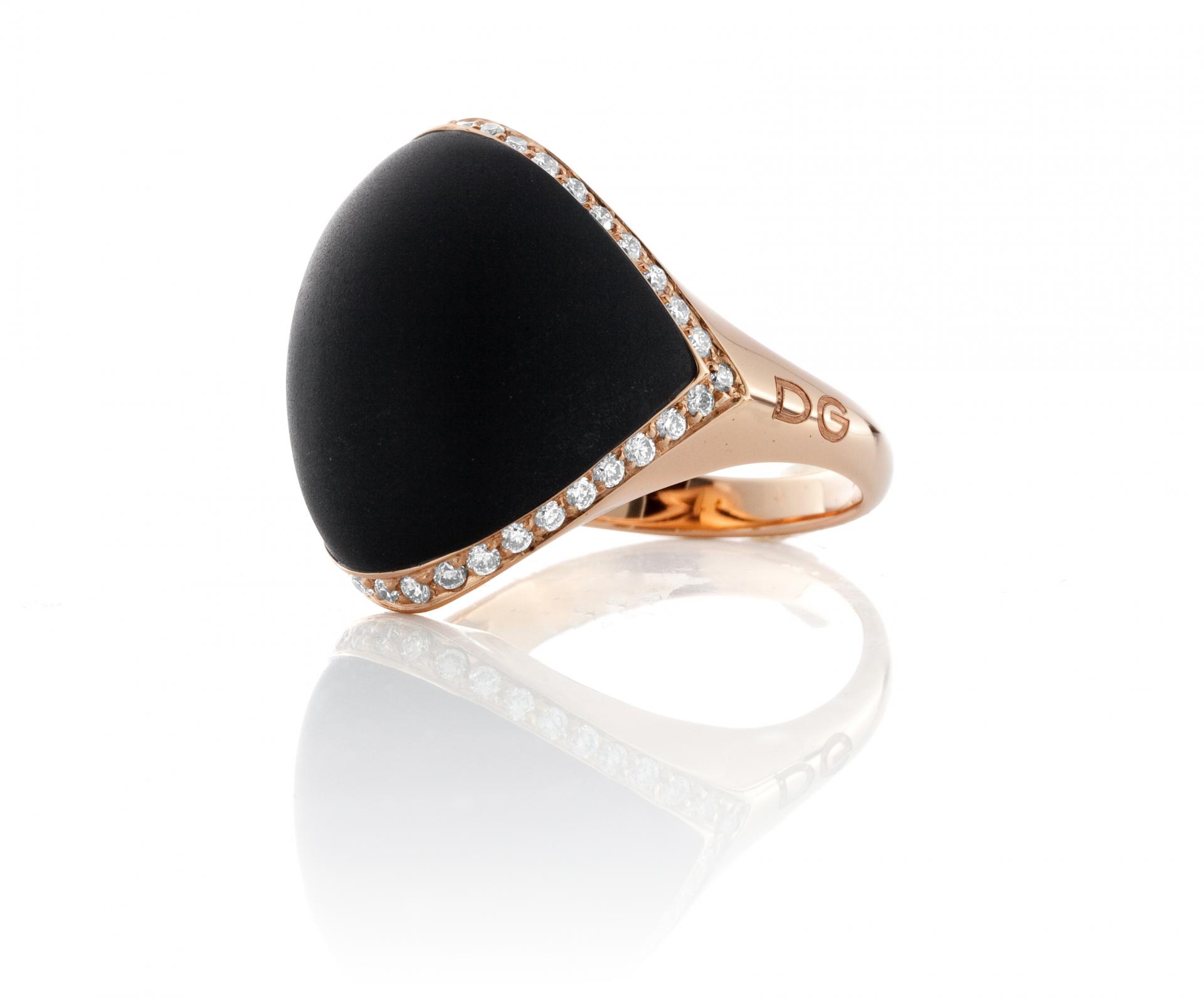
Arnaud Wittmann repeats the experience in a jewellery collaboration with painter and sculptor Michel Mouffe. In dialogue with the Belgian artist, our jewellery creator brings to life an exclusive collection in onyx and with or rose gold for Maison De Greef, comprising rings, pendants and earrings.
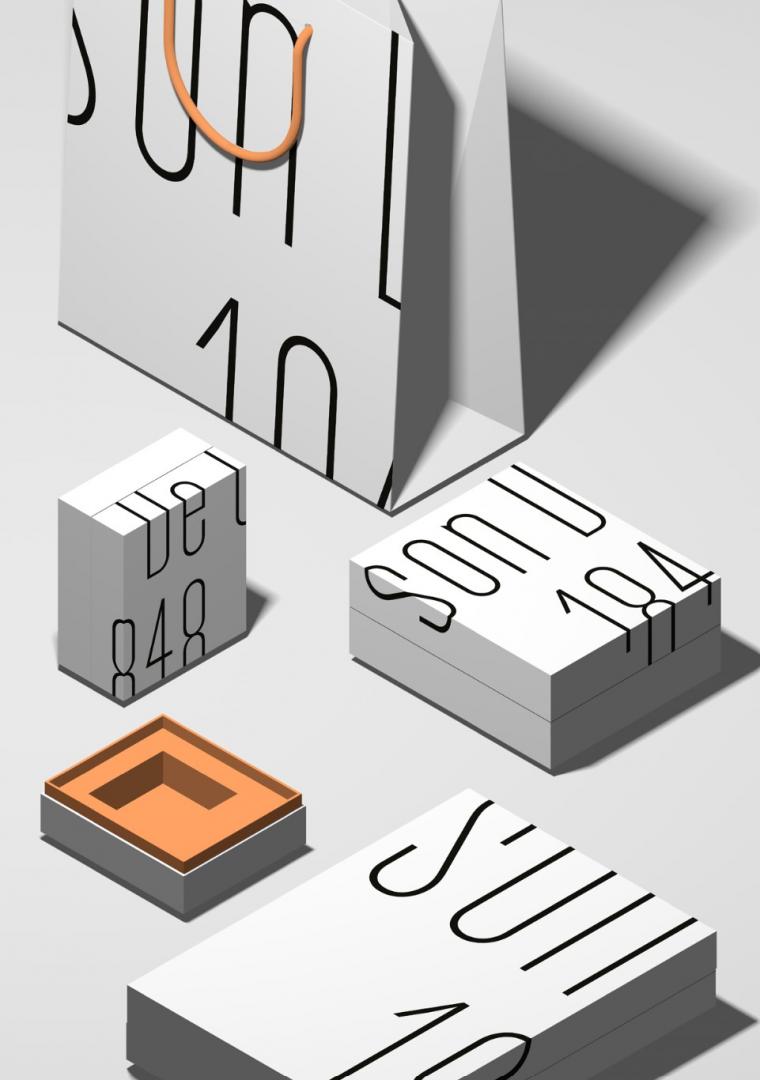
Maison De Greef enters the digital era and develops its brand identity on-line. A website presents its collections of jewellery and timepieces and hosts its magazine on-line. Social networks subsequently act as intermediaries to present Maison De Greef’s creations and the latest news from the company.
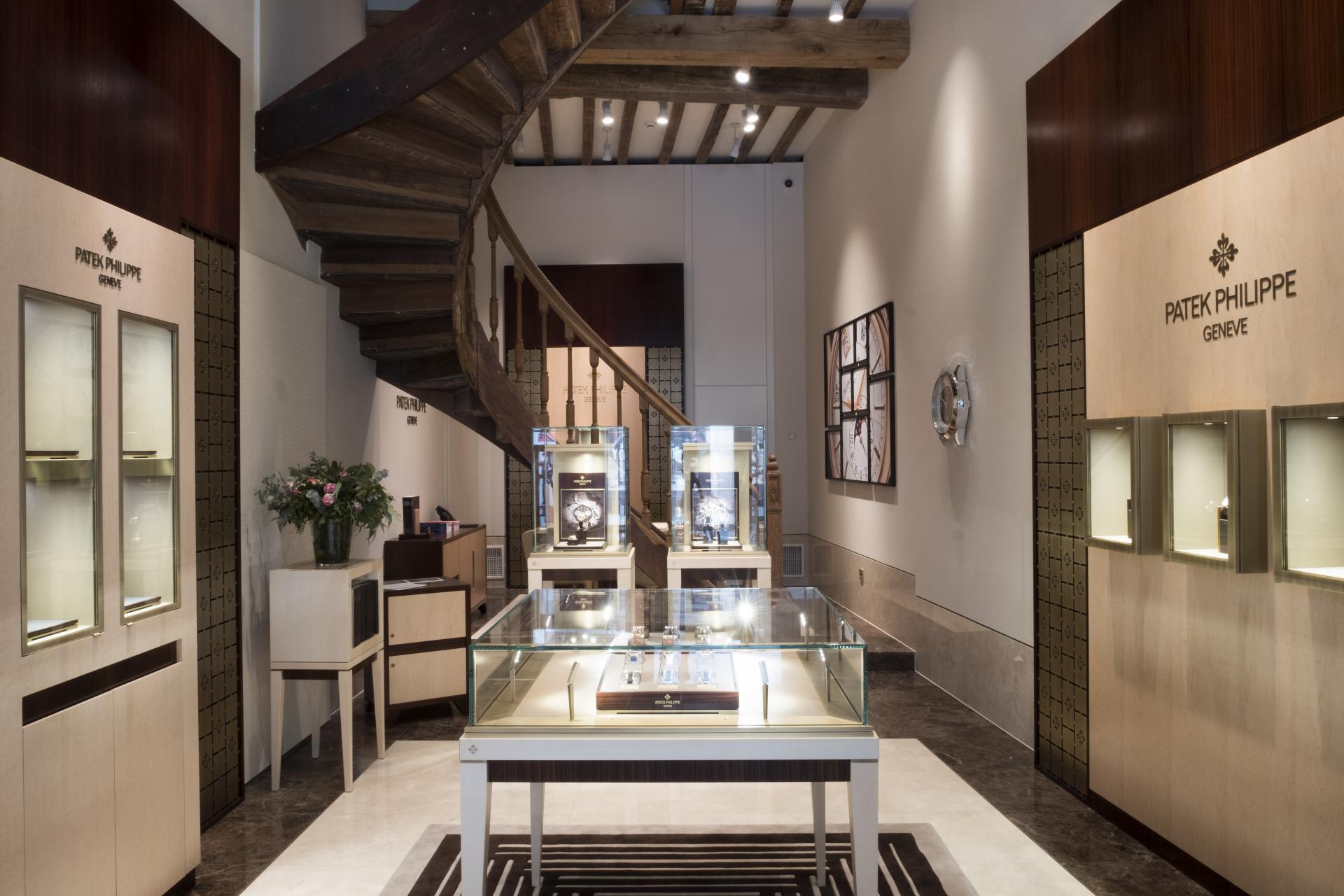
On the threshold of its 170th anniversary, Maison De Greef has a makeover. A unique example of modernist architecture in the heart of old Brussels, the listed façade is restored and the shop once more expands its premises to include No. 28 rue au Beurre, where everything began.
Wishing to strengthen its collaboration with Patek Philippe, the renowned Swiss watch brand, Maison De Greef reserves an exclusive space for it at the very place where the business came into being.
The latest models of legendary timepieces, detailed immersion in the luxury universe of Geneva manufacturing, and leading-edge expertise inspire a miniature horological kingdom of 50m2, where contemporary design blends harmoniously with the classic elements of the building.
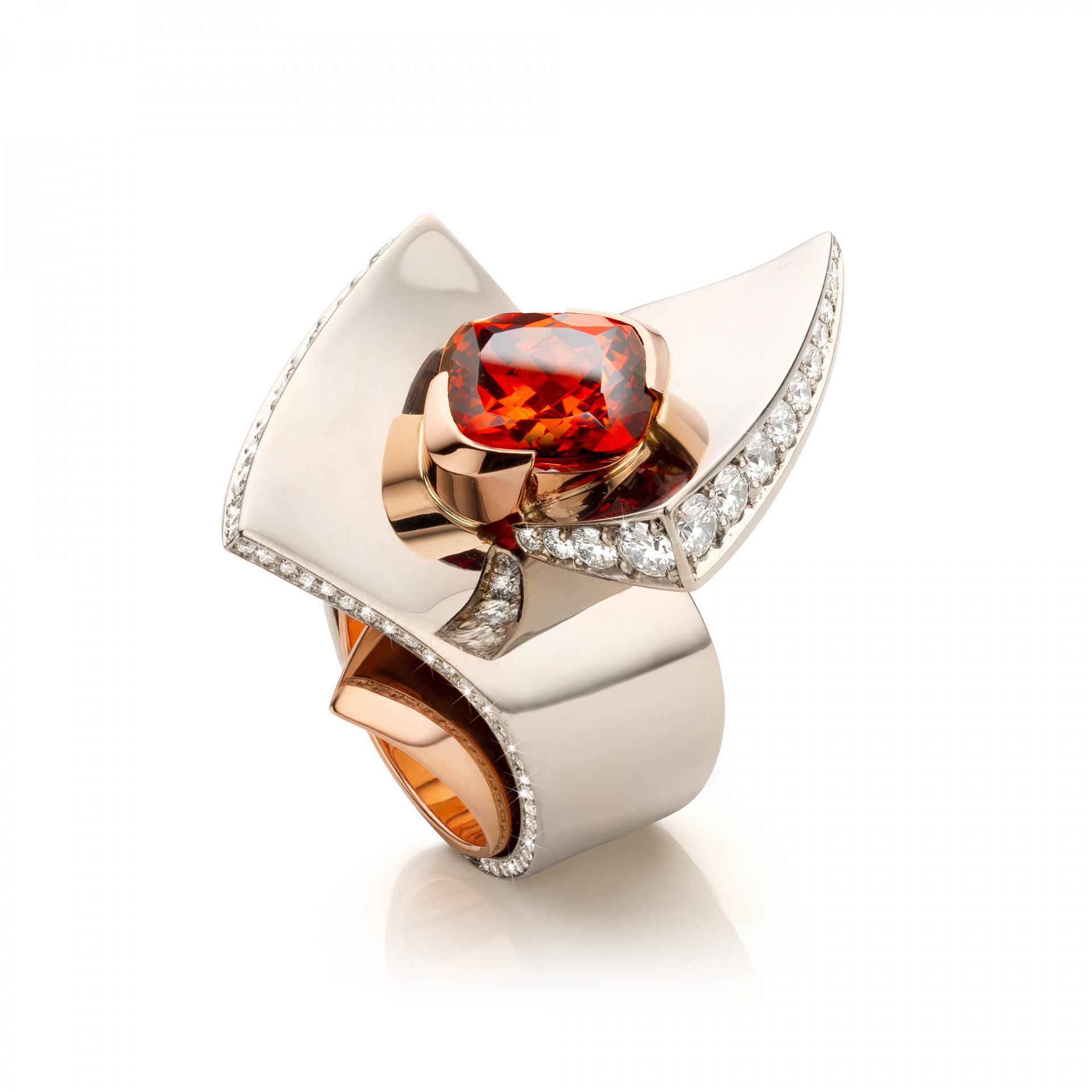
To celebrate 170 years of Maison De Greef, Arnaud Wittman creates a limited collection: The Fire Spark. The jewellery creator went in search of something exceptional to highlight the importance of this anniversary, and discovered it in spessartine, a rare variety of Mandarin garnet. Playing with the volumes around this flamboyant stone, rings and pendants appear to defy the laws of gravity. To create these jewels by hand, Maison De Greef had called in Sansen & Gangi of Liège, a high-end jeweller famous for its mastery of complex and unique jewellery techniques. The result is a perfectly balanced collection of spectacular appearance.

After spending 20 years at the head of Maison De Greef’s watch department, Jacques Wittman decides on a change of pace to dedicate himself to other passions.
As head of the brand, Arnaud Wittmann reaffirms the family values of preserving craftsmanship and giving personal service with every day that passes.
Since the summer of 2020, Maison De Greef has a new boutique situated in Knokke, the prestigious Belgian costal town.
Arnaud Wittmann and his wife, Tania invite you to join them to view the latest inhouse jewellery creations and admire Vhernier, Lange & Söhne and Ressence novelties.
Credit : Sébastien Van de Walle